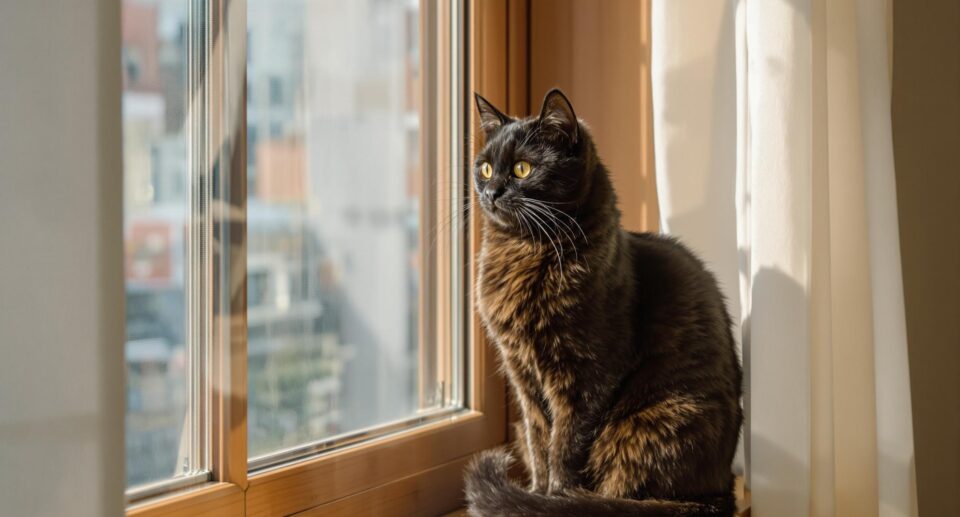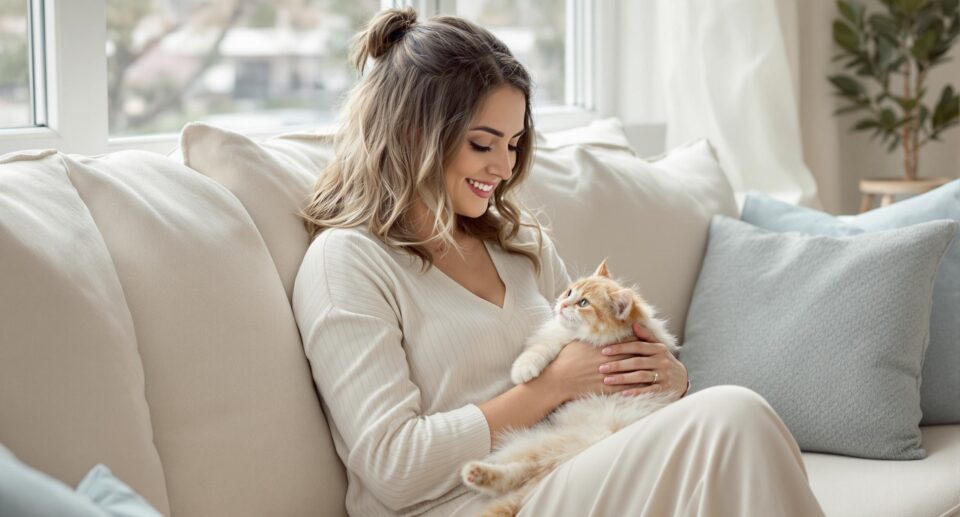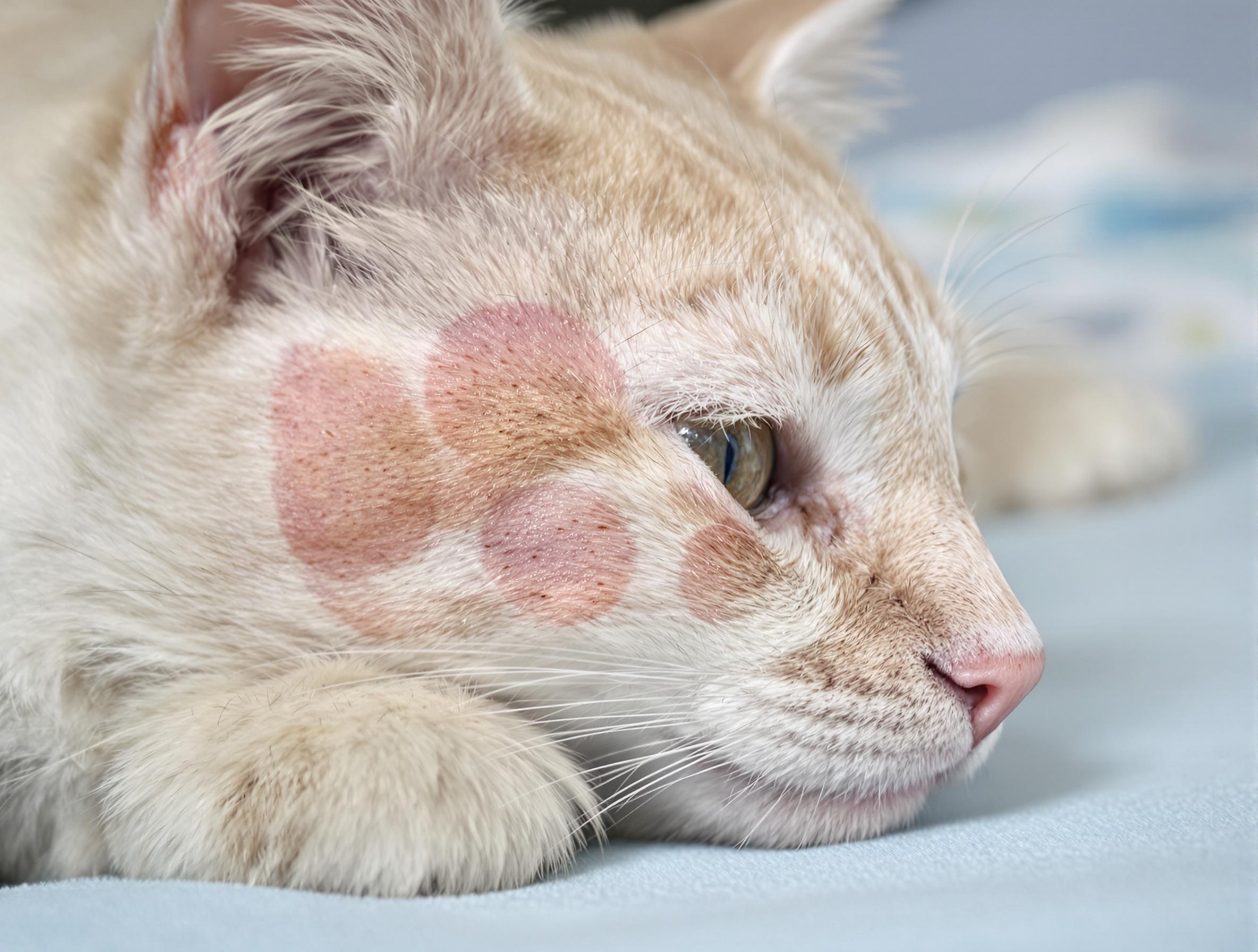
Key takeaways:
- Understanding your cat’s unique personality and needs can help gauge how well they cope with alone time.
- Creating a comfortable and enriching environment at home aids in reducing separation anxiety and keeps cats engaged.
- Gradual adjustment and personalized care strategies foster confidence and well-being for cats during solo times.
Many cat parents feel that familiar pang of guilt when leaving their furry friend home alone. You’re not alone in this dilemma—but it’s all about finding that sweet spot between respecting your cat’s independence and fulfilling its social needs.
While adult cats can typically handle being solo for up to 24 hours, leaving them alone for too long might lead to some unwanted behaviors. You might notice excessive meowing, litter box problems, or other signs that your kitty feels neglected.
Every cat is unique, and your cat’s reaction to alone time depends on their personality and age. Some cats stay perfectly content with their own company. In contrast, others might develop separation anxiety (a condition where pets become distressed when separated from their owners). Senior cats often need more attention as they age, too.
To determine how long your cat can comfortably stay home alone, you’ll need to listen to its needs and watch for behavioral changes that suggest it is feeling lonely. PetHealthMD has comprehensive guides to help you understand your cat’s behavior.
Recognizing your cat’s needs
Some felines rush to the door like excited puppies when you return, while others maintain their independent attitude, barely acknowledging your absence.
A content cat who’s comfortable being home alone typically:
- Maintains regular eating and drinking habits
- Sleeps in favorite spots around the house
- Uses the litter box normally
- Plays with toys independently
- Greets you calmly upon return
Watch for these signals that your cat might need additional support:
- Excessive meowing or clinginess before you leave
- Changes in appetite or litter box habits
- Destructive behavior
- Showing unusual aggression or hiding
- Over-excited greetings when you return
Building your cat’s confidence in solo time requires patience. Begin with brief 30-minute absences, then gradually extend to 2-3 hours. When properly prepared, most cats adjust well to spending nights alone. Healthy adult cats generally handle overnight stays comfortably. However, kittens and seniors (cats in their golden years) require more frequent attention.
Age and health influence independence. A young, energetic cat might need more enrichment activities, while an older companion may prefer quiet comfort. Create a secure environment with cozy window perches, engaging toys, and familiar scents throughout your home. For longer absences, consider arranging for a trusted pet sitter to visit – your cat will appreciate the company, even if they pretend otherwise.
Preparing essentials for your cat’s solo time

Setting up your home properly can make all the difference in how your cat handles solo time. With thoughtful preparation, your feline friend can feel secure and content rather than anxious when you’re away.
- Set up multiple feeding spots around your home, keeping water bowls separate from food areas. For short trips under 24 hours, pre-measure daily portions. Planning a weekend getaway? Invest in automatic feeders that release small meals throughout the day to maintain your cat’s routine.
- Smart litter box placement follows a simple formula: one box per cat, plus an extra. Your cat will feel more secure with easy access to clean litter in quiet locations. Even with just one cat, place two boxes in different rooms, away from where they eat.
- Use soft bedding that carries your scent to create cozy resting spots in both sunny windows and peaceful corners. These familiar-smelling retreats help your cat feel connected to you even when you’re not home and provide comfortable places to relax.
- Transform your space into a feline playground with scratch posts and climbing options near windows. The natural light and outdoor views aren’t just entertaining—they help your cat maintain normal sleep-wake cycles.
- Keep boredom at bay with different toys scattered throughout your home. Combine stationary challenges like puzzle feeders with interactive motion toys to engage the mind and body while you’re away.
Managing cat separation anxiety effectively
Cats develop emotional connections that run surprisingly deep. About two-thirds of cats form strong attachments similar to those seen in children and dogs. If your cat shows signs of distress when you’re preparing to leave—excessive grooming, unusual vocalization, or sudden furniture scratching—you’re witnessing common separation behaviors.
Once you spot these behaviors, you can take steps to boost your cat’s sense of security. Transform your living space into a feline sanctuary with soft retreats in quiet areas. Many cats find comfort in familiar sounds—try leaving on gentle music or TV shows they’re used to hearing when you’re home.
For added support, consider calming pheromone products that create a soothing environment. Build confidence with short absences, like stepping out to check your mailbox, then gradually extend your time away as your cat adjusts.
If your efforts aren’t helping and your cat continues showing stress signals like persistent crying or unexpected aggression, don’t hesitate to seek additional help. Some cats experience more intense anxiety, particularly during nighttime hours.
A professional veterinary evaluation can identify any underlying health issues that might be worsening anxiety symptoms and provide medical solutions if necessary.
Expert tips for leaving your cat home alone
Making your home cat-friendly during your absence doesn’t require elaborate setups. About 8 out of 10 cats show signs of restlessness when their routines change. Here are simple, effective ways to keep your feline companion comfortable while you’re gone:
- Install an interactive camera where your cat likes to lounge. Many cat owners enjoy checking in throughout the day and sending treats remotely—it’s like sharing a moment even when you’re miles apart.
- Create cozy spots using your cat’s favorite blankets or a t-shirt you’ve recently worn. Your familiar scent provides comfort, and research shows cats remain more relaxed when surrounded by items that smell like their human.
- Place fresh water fountains and timed feeders in peaceful corners of your home. Maintaining regular feeding schedules prevents the stress that often leads to unwanted behaviors.
- Arrange an exciting playground with toys—scratch posts near windows, balls in play tunnels, and food puzzles that challenge your cat’s intelligence. Rotate these items weekly to maintain your cat’s interest and activity level.
- Consider hiring a professional pet sitter who can provide brief companionship visits for extended absences. Look for someone willing to send updates about your cat’s mood and activities so you can stay connected.
- Enlist a trusted neighbor as your backup caregiver with detailed notes about your cat’s preferences and any special needs. Brief social interactions benefit most cats, even when their owner is away.
When you notice your cat maintaining normal eating and playing routines, you’ll know your home-alone arrangements are successful. These positive signs indicate your cat feels secure and content in your absence.
Post-absence reintegration and observations

Returning home to your cat after being away is a bit like reconnecting with an old friend—except this friend might give you the cold shoulder or smother you with affection right away. The first few days back together can really impact how smoothly things go.
- Allow approach on their terms: When you get back home, let your cat come to you when they’re ready—some cats will be all over you right away with purrs and cuddles, while others might play it cool for a bit.
- Keep an eye on their behavior: Notice if they’re eating or sleeping differently than usual—these little changes can tell you a lot about how they’re adjusting to having you back.
- Watch for new habits: Your cat might start bringing you their favorite toy or following you around the house like a tiny shadow—these are their ways of reconnecting with you.
- Start with quiet moments together: Just sit with them during mealtimes or give them those chin scratches they love when they hop up next to you.
- Keep their special spots intact: Don’t rearrange their favorite sleeping nook or play area—cats love their familiar comforts.
- Look out for warning signs: If they’re not eating much or suddenly meowing a ton, they might be having a harder time with the transition.
- Stick with it: Your patience and regular attention will help you both get back to your normal, happy routine.
Consider veterinary support: If something seems off, your vet can check if there’s a medical issue that popped up while you were gone and help get things back on track.
Tailoring care to your cat’s needs
Finding the right balance when leaving your cat home alone takes understanding your companion’s personality. Creating a comfortable environment can help your cat feel secure in your absence. Regular routines, familiar scents, and occasional check-ins from trusted caregivers further enhance their sense of stability.
The relationship you build during your time together influences how your cat handles time apart. Pay attention to their behavior before you leave and when you return—these moments offer valuable insights into their emotional well-being. With thoughtful preparation and responsive care, you can nurture a confident cat who enjoys independence while still cherishing your special bond. To learn more about caring for your cats, browse our other guides at PetHealthMD.





